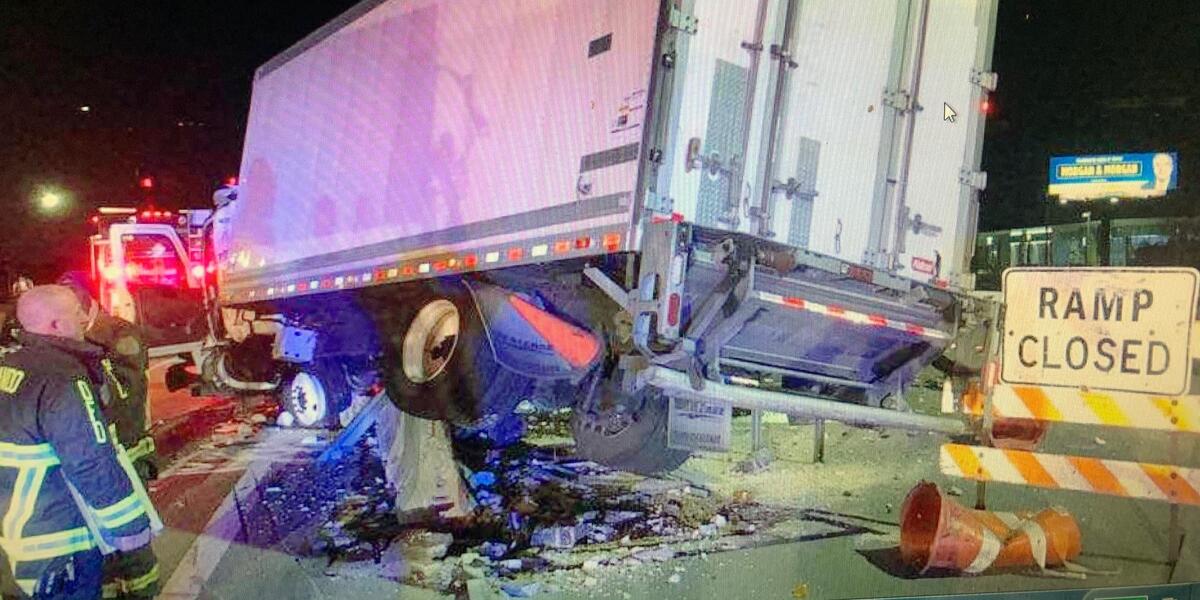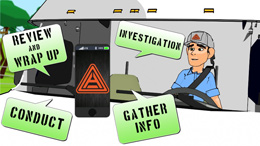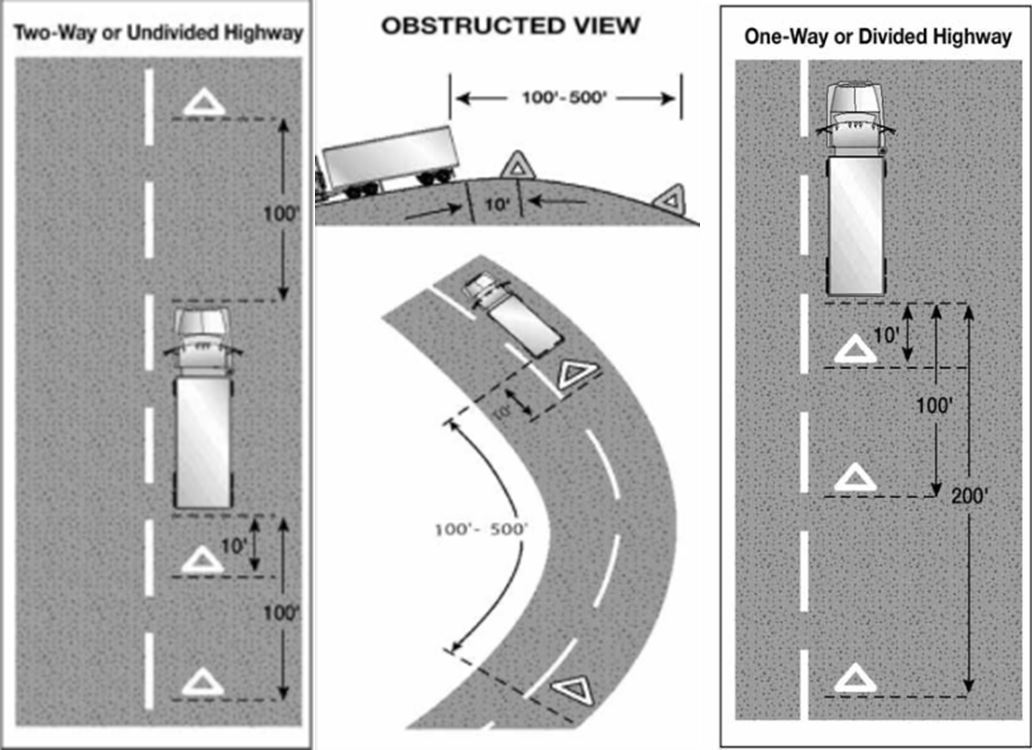Today more than ever, companies that operate commercial motor vehicles need to prepare in advance for an accident that one of your vehicles may have. Depending on the accident's severity, just the involvement is enough to throw the thought process of most drivers and supervisors into an array. Companies need to have a clear and direct plan that will be implemented when an accident occurs. This plan needs to be flexible and can be activated no matter what time of the day or night. When an accident occurs, the company has several immediate items that must be addressed.
- The safety and protection of the driver and the public.
- Protecting the company’s liability and physical damage exposure.
- Provide information to Law Enforcement officials.
- Control of progressive damage that may occur from the accident, including Hazardous material spills, cargo and the vehicles.
- Compliance with State and Federal Regulations (such as drug and alcohol testing if required).
- Documenting and protecting the physical evidence at the scene (Spoliation of evidence).
- Securing witnesses to the accident.
- Addressing the News Media and social media.
- Having your vehicle towed to a safe and secure site.
Recommendations for a company to prepare for an accident:
-
Put together an accident response team. Ideally, this team would consist of the safety director, the driver involved, the insurance accident investigator, the company’s attorney, and an accident reconstruction expert if needed. - Have an accident action plan that outlines the response team's direction and responsibilities.
- Develop written policies for drivers to follow when involved in an accident, regardless of severity. This would include reporting, conduct at the scene, responsibilities, drug and alcohol testing, etc.
- Include accident scene training as part of your new driver orientation program. Drivers should know exactly what to do and what NOT to do in the event of an accident.
- Place Accident Kits in the units. This kit should include a camera, accident report, pencil, and instructions. Place an expiration date on the outside of the kit that coincides with the expiration date of the camera. It is recommended that these kits be sealed or secured so the materials Drivers need to be trained on how to use the camera, which pictures should be taken, and which pictures NOT to take.
Photographing an Accident Scene
The old saying “a picture is worth a thousand words” is especially true when talking about taking photos at an accident scene. Over the past years, carriers have been placing disposable film cameras in their trucks to have drivers document evidence from an accident scene. Today, with the evolution of digital cameras, finding a place to develop film is difficult. Regardless, if a driver has a film or digital camera, have you provided training to your drivers on how to use the cameras? If not, you run the risk that the driver will not have taken photos needed to document evidence or, worse yet, that the photos the driver has taken can be used against you in a court of law. Use the following tips to train your drivers:
- Show the driver how to properly operate the camera (if the camera is provided) or make sure they have a digital camera. Have photos as samples to show them how close or far to take the photos.
- Shoot all available pictures on the roll at an accident scene (if film), or make sure they know to shoot plenty of pictures. That one extra picture may hold key evidence to protect your company.
- Photograph all damaged areas and undamaged areas of all vehicles. Do not forget to photograph the license plate of all vehicles involved in the accident. This photo should be close enough to read the plate and identify which vehicle it was on; try to include the unit number in the picture.
- Photograph the interior of the vehicles, including the dash area and driving compartment. Include in the photo all safety equipment, such as seat belts, steering wheel, pedals, and airbags.
- Photograph the accident scene from all angles. When photographing a vehicle or entire scene, draw an imaginary box around the vehicle or scene. Then photograph each corner of the box.
- Take pictures of the roadway leading up to the accident scene. Any skid marks should be photographed in various angles. Include in the photograph stationary objects, telephone poles, road signs, buildings, etc.
- DO NOT take photos of anyone injured or deceased due to the accident. However, take photos of occupants in the other vehicles to document who was involved in the accident. For example, if the driver of the other vehicle is out changing a tire, photograph this action to show the physical condition of the other driver immediately following the accident.
Where am I required to place my reflective triangles to alert other drivers of my situation when I break down on the roadway?
From the Code of Federal Regulations 392.22
“Whenever a commercial motor vehicle is stopped upon the traveled portion of a highway or the shoulder of a highway for any cause other than necessary traffic stops, the driver of the stopped commercial motor vehicle shall immediately activate the vehicular hazard warning signal flashers and continue the flashing until the driver places the warning devices (triangles).”
Answer: First, activate your 4-way hazard flashers immediately. Next, place the warning reflective triangles as follows:
- One on the traffic side and four paces (approximately 3 meters or 10 feet) from the stopped commercial motor vehicle in the direction of approaching traffic.
- One at 40 paces (approximately 30 meters or 100 feet) from the stopped commercial motor vehicle in the center of the traffic lane or shoulder occupied by the commercial motor vehicle and in the direction of approaching traffic; and
- One at 40 paces (approximately 30 meters or 100 feet) from the stopped commercial motor vehicle in the center of the traffic lane or shoulder occupied by the commercial motor vehicle and in the direction away from approaching traffic.
Hills, curves, and obstructions. Suppose a commercial motor vehicle is stopped within 500 feet of a curve, the crest of a hill, or other obstruction to view. In that case, the driver shall place the warning signal in the direction of the obstruction to view 100 feet to 500 feet from the stopped commercial motor vehicle to afford ample warning to other highway users.
Divided or one-way roads. Suppose a commercial motor vehicle is stopped upon the traveled portion or the shoulder of a divided or one-way highway. In that case, the driver shall place the warning devices as follows, one warning device at 200 feet and one at 100 feet in a direction toward approaching traffic in the center of the lane or shoulder occupied by the commercial motor vehicle. He or she shall place one warning device at the traffic side of the commercial motor vehicle within 10 feet of the rear of the commercial motor vehicle.









